I try not to be pretentious on this blog. I do my best to keep things simple and familiar enough that the average person who likes to cook will find something that they can make just about any day of the week without having to earn a degree in the culinary arts to do so. I also realize that most of you probably live either in the city or suburbia. Most of you don’t have chickens next door, goats down the street, or cows in your back yard. And you probably don’t have a neighbor who just got there very own milk cow to help save them money. I realize all of this. I also realize that there are a few out there who love the process of making food. You make your own bread. You can your own food. And you eyeball that gallon of raw milk at the farmer’s market with a curiosity that you know someday must be satisfied. This post is for you.
I am by no means an expert cheese maker. As a matter of fact, this was my first go with mozzarella, although I have made farmer’s cheese before.
Making cheese -Mozzarella in this case – is one of those food projects that most people ( including myself) are a little intimidated by. I mean there are enzymes and raw milk and you are leaving dairy products out on the counter for hours! It goes against the grain of everything you were taught as a child. It seems catching some form of deadly disease would be inevitable with all of that going on, but really it’s pretty safe.
Now the first step to making cheese is picking the freshest milk you can get. You can use milk from the store, but please spring for the good stuff, or if you have access to raw milk use that. Now the shelf life of raw milk is about a week but you can use soured milk for cheese ( where do you think sour cream came from?). Make sure wherever you get your raw milk is a good reputable place that sells only fresh products. Our neighbors have a milk cow so I can go milk the cow myself if I wanted to. Freshness is not a question.
The second step is cleanliness. Make sure all of your utensils, pots and pans are clean and sterile. I don’t think I need to tell you why. Just do it.
The third step is to give yourself plenty of time. Don’t expect to get this done in an hour. It won’t work.
Ok, here we go…
You are going to need:
1 gallon of fresh milk ( whole or skim)
1 1/4 t. citric acid dissolved in 1/2 cup cool water ( you can find citric acid with the canning supplies at your local grocery store)
1/2 Junket Rennet Tablet ( you’ll probably have to order this online unless you have an Amish store close to you. Which is where I found mine)
First, warm the milk over low heat until it has reached 88 degrees making sure not to scorch it.
Next, add the citric acid dissolved in water to the milk and stir well.
Then, dissolve the rennet tablet into a 1/4 cup cool water. Stir thoroughly in the warm milk.
Let the milk sit, undisturbed for 1-2 hours until a *clean break* is achieved
*A clean break has been achieved when you can stick you finger into the milk and it has gelled enough to break cleanly when you pull your finger out. If it still seems liquid or semi-gelatinous let it sit for another 1-2 hours. Be patient and don’t disturb it*
Once you have a clean break, cut the curd into cubes with a long, sharp knife.
Put the pot with the curds back on the stove and heat to 108 degrees and hold there for 35 minutes. Stir gently through out the process so the curds don’t stick together, but don’t squeeze or mash them.
Pour the curds and whey over a cheesecloth lined strainer and into a 1 gallon vessel ( you can save he whey to make Ricotta). Let the curds drain for 15-20 minutes.
Break up the curd and mix 1 teaspoon of salt into the curd.
Place 1 cup of salted curd in a 2 cup dish and microwave for 45 seconds. Stir really well and microwave for another 20 seconds.
Lastly, Stretch and fold the cheese to make it elastic then form into a ball and drop into cold salted water.
Repeat with the rest of the curds and let sit in the fridge for a day before using.
Wrap in plastic wrap to store. Use within a week or so.
I recommend a simple Caprese Salad:
Sliced ripe tomato
sliced fresh Mozzarella
Chopped Fresh Basil
Balsamic vinegar
salt and pepper
Arrange tomato and cheese slices on a plate. Sprinkle with basil, salt and pepper and lightly dress with vinegar. Enjoy!!
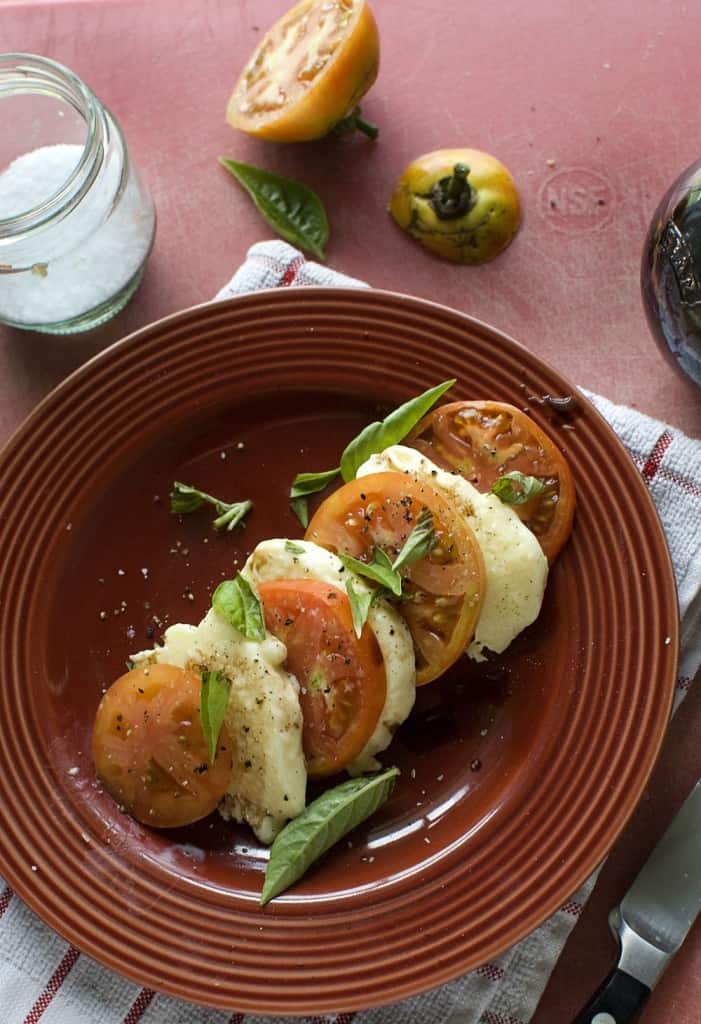

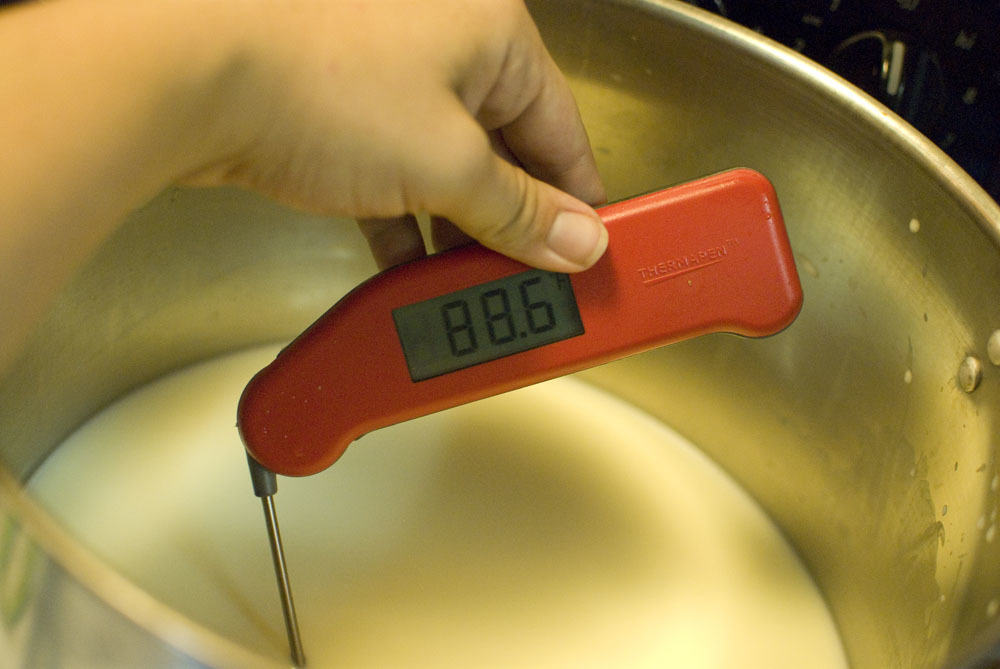
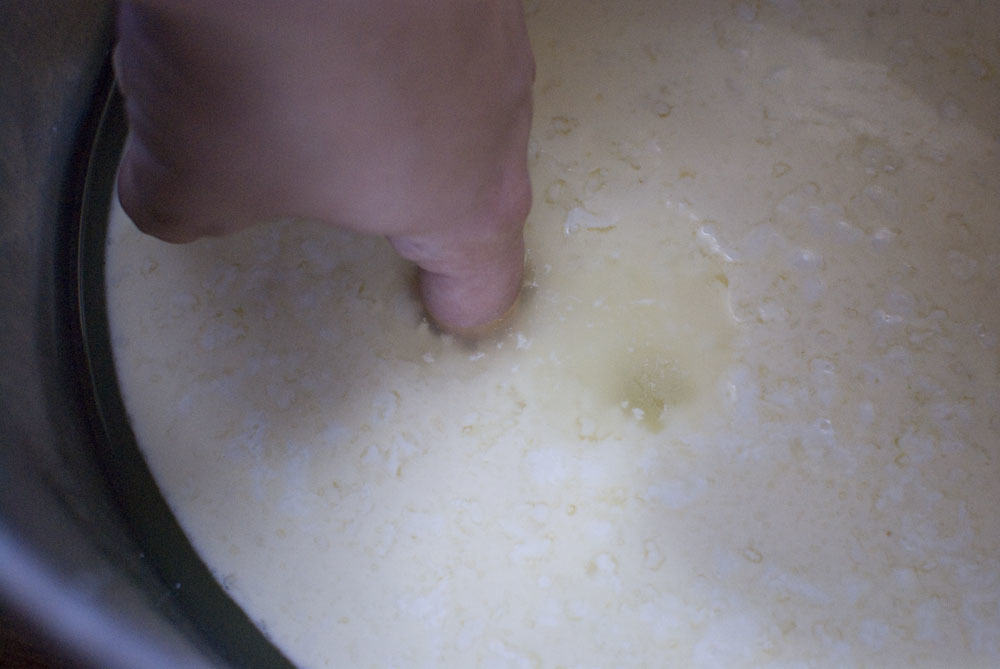
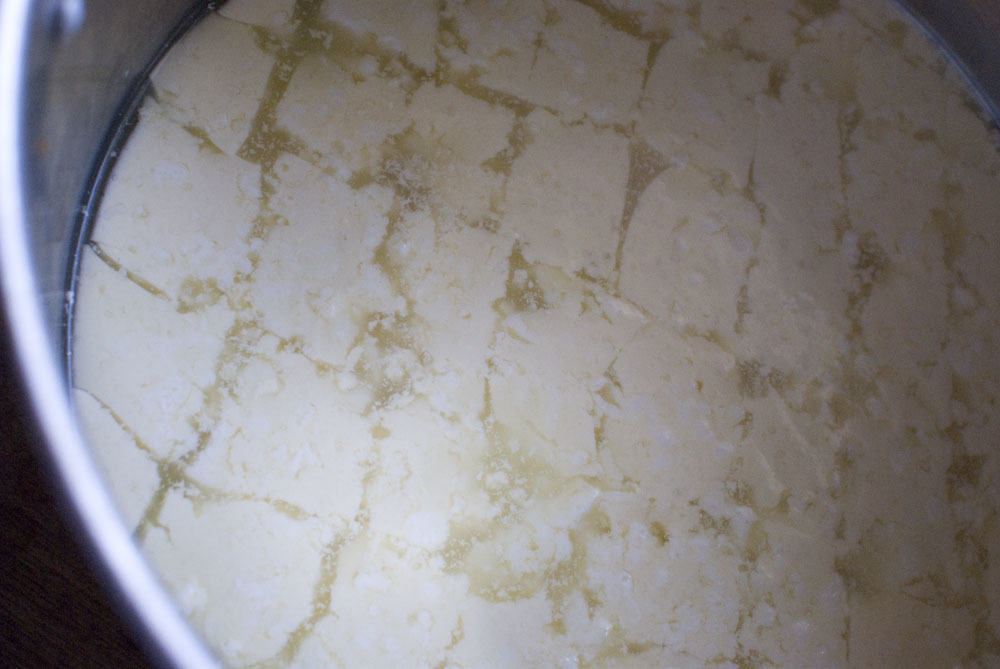

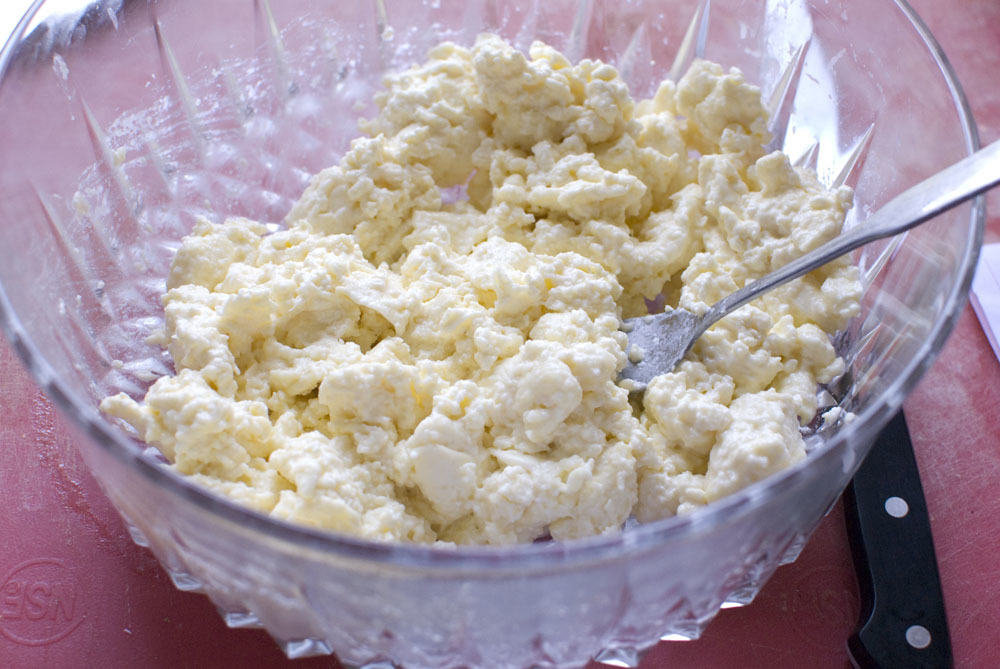
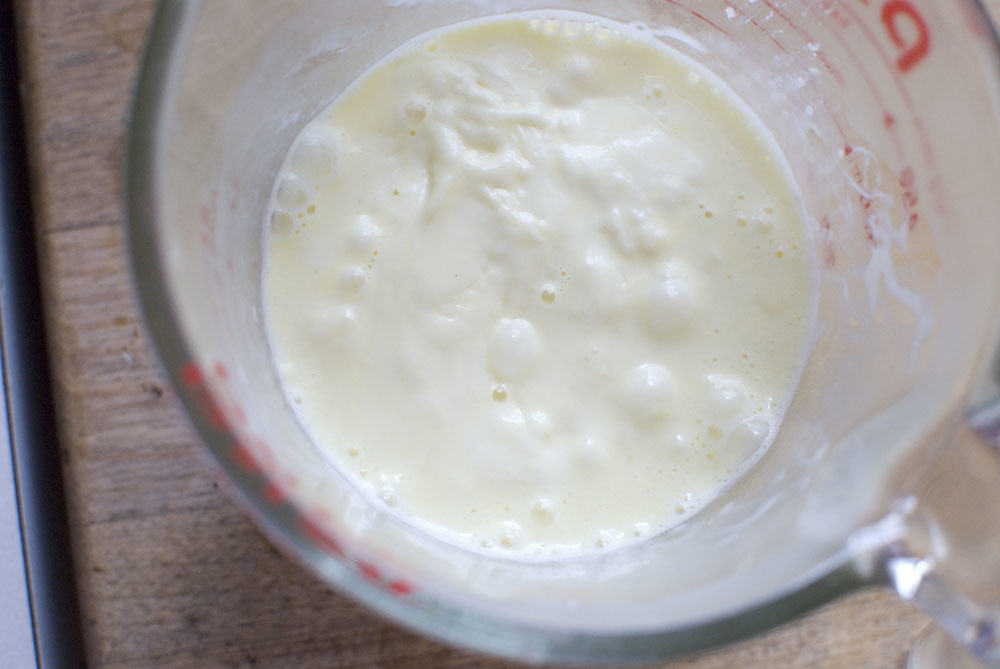
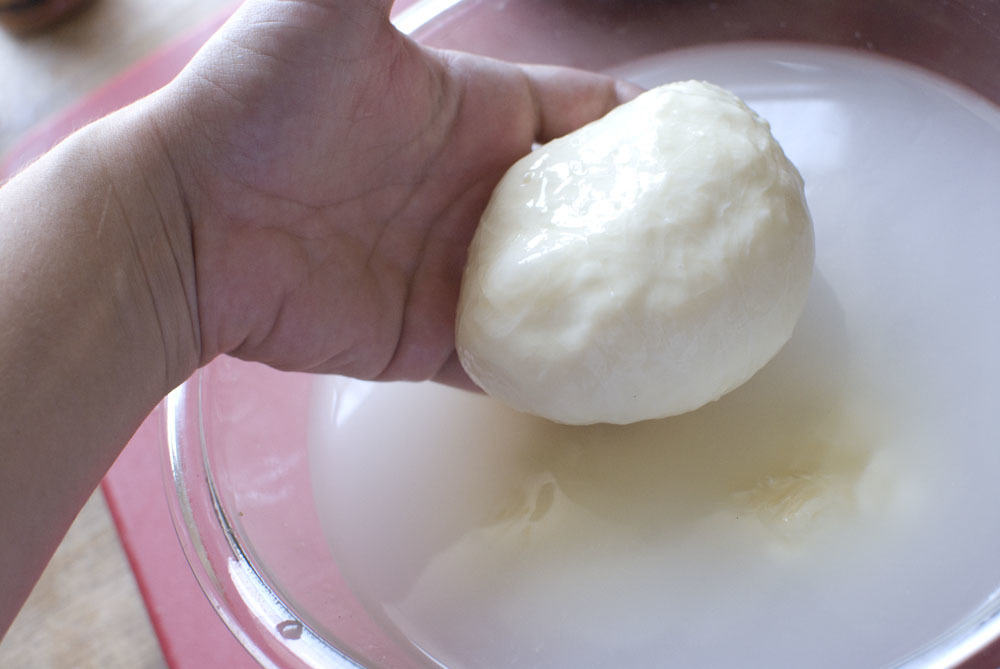
Oh, this is so cool! First you have me pressure canning my fool head off, and now you start with the cheese. I have made ricotta before, then used the whey for making bread. Gotta try this though. Had to laugh at the junket – my grandmother, whose family originates from WV/Tenn, used to make some kind of pudding/dessert with it when my father was a boy – he calls it Junk It. No mushrooms yet.
I agree with Karen, I am not sure what you will be up to next… I think this is the neatest thing yet, you just go on with yourself… about junk-it, back home, we used the kind for making ice-cream for years, so easy…
This is such a cool post! I NEVER would have thought to make my own cheese, but I bet it tastes amazing!!
If you ever get the opportunity, you should give it a whirl.It’s delicious!
Great tutorial! Making cheese is not just for dDairy farms!
I was wondering- can the cheese be made without the Rennet? I ask this because I have read/learned that the rennet is what can cause people with sinus issues with dairy products to have those problems…I’d LOVE to make my own cheese, if it’s possible without the rennet! Also, interestingly enough- most organic cheeses I’ve tried did not have the rennet, and I never once had sinus/allergy problems after eating them.
I’m sure it can, but I am not familiar with the way to do that. This is the only way I have ever made mozzarella. Rennet or rennin is basically the enzyme ( from animal stomachs I believe) that kickstarts the cheese making process.I have heard you can also use citric acid, but I’m not sure on exactly how that works. I have made a soft cheese using buttermilk before, but it was nowhere near the consistency of mozzarella. Good luck!